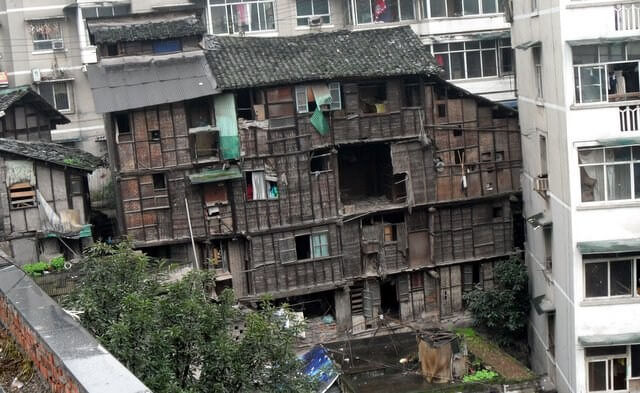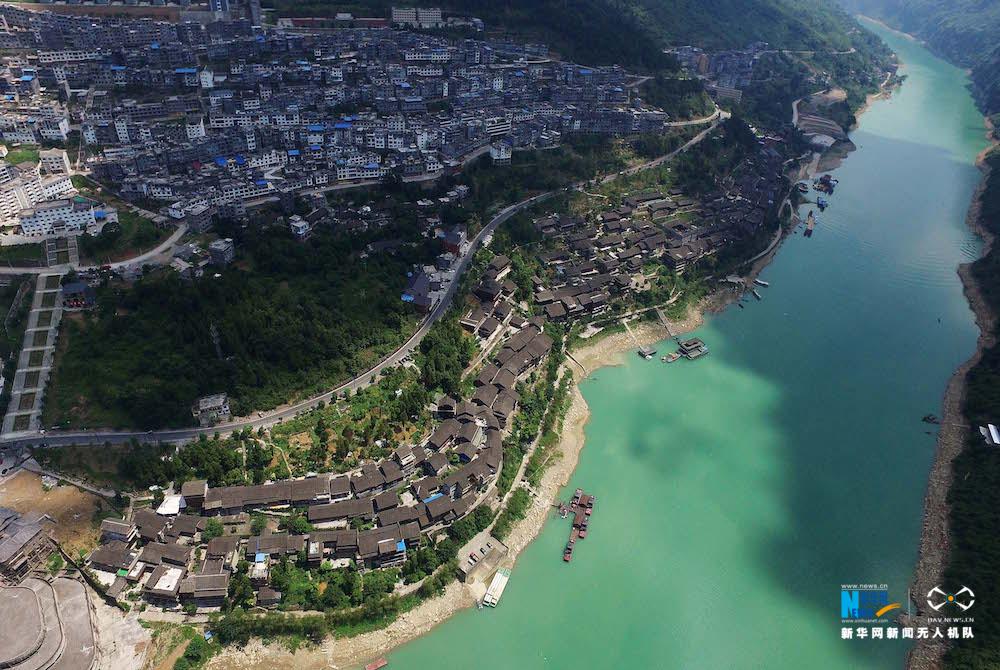THESIS TITLE
Re-activating the Vernacular – in the Context of Globalization
THESIS STATEMENT
Under the stimulation of globalization and process of urbanization, the value of vernacular or traditional architectures is catching attention, especially in developing countries, including China, India, Mongolia and Brazil, etc. Culturally, the specific space and atmosphere created by the vernacular architecture have been shaping the residents’ life and thoughts for a long time and rooted in their memory. Technically, the structure and form of the building, the use of material and the way of construction, are all related to the adaptation to the natural surroundings, the confrontation with climatic and topographic challenges, and evolution through generations in history.
Being aware of and responsible to the value of vernacular architecture, and at the same time welcoming the new technologies and ideas brought about by the globalization, the thesis is proposed to address the problems in the regions under transition and development, and aiming to merge the valuable vernacular tectonic elements and environmental strategies into the contemporary ways of design. The result will be an architectural solution which is able to present the vernacular gene while performing supportively to the further developments and transformations of the region.
CONTEXT
In the contemporary stage of globalization, when the interaction between different regions is becoming obstacle-free, the diversity of different regions is disappearing. In terms of architecture, the cities are looking more and more similar because of the implementation of international style, so as the rural areas in the process of rapid and unmindful urbanization.
In many of China’s rural areas and rural-urban fringe zones, there exist various types of vernacular architecture, including Siheyuan courtyard houses in Beijing, cave dwellings in the Loess Plateau area, round-shaped Hakka Tulou in Fujian Province as well as the stilt houses in the southwest part of China. Unfortunately, most of these vernacular architectures are dying under the impact of globalization and urbanization.
In China, the impact on vernacular architectures happens both top-down and bottom-up. Top-down, in order to develop economy (which is considered as one of the main task in the current situation of China), when the government is making decisions, the conservation of vernacular architectures is sacrificed. One of the typical cases is the Three Gorges Project. To free the area for reservoir, over one million residents moved out from their homeland of generations and most of the vernacular architectures were abandoned. Although some of the buildings in the historical villages were moved out and reconstructed in a new site, and promoted as eco-tourist attractions, the geographical and social contexts of them were permanently lost. Bottom-up, as the life pattern of the residents are changed in the urbanized environment, the vernacular houses are also abandoned. A great number of rural residents leave the agrarian villages and make a living in the city. After they get enough money from the city, some of them have to come back to the village (mostly due to the hukou system in China). Usually, when they are back to the village, they will spend the money on improving their living environment by building a new house. Influenced by their experiences in the city, the materials, construction methods and style of the new houses are all directly borrowed from the city where they regarded as advanced. That is the reason why there are always newly built brick and concrete boxy buildings in the rural area.
In general, there are currently two types of status of vernacular architecture in China’s rural areas and rural-urban fringe zones. One is being mandatorily and superficially kept as eco-tourist attractions, the other is being replaced by “modern” universal-style houses. Obviously, neither of the two status is keeping vernacular architecture truly alive and active, the consequences are not only the lose of diversity and identity in culture, but also unnecessary costs and damages in relation to the environment.
KEY IDEAS
The key ideas are opposed to both of the two directions mentioned above, standing on the position of “critical regionalism”.
On the one hand, being critical to the international style and universality, the thesis is emphasizing on keeping the diversity and strengthen the identity. The related approaches will focus on the relationship with the natural environment, the use of local material, the traditional way of construction.
On the other hand, being critical to the superficial and formalism approaches of copying and faking the vernacular appearance, the thesis will also be work on the new requirements of modern life(both in function and performance) that the vernacular building failed to fulfill, and possible ways of enhancing the material and construction method with the aid of contemporary knowledge. Aiming at generating prototypes out of the vernacular samples, that can be applied to the regions with similar environmental, economical, social and cultural conditions.
INTENDED SITE & PROJECT
Chongqing is the youngest and largest municipality in China directly controlled by the central government. Being municipality since 1997, Chongqing has been developing rapidly, taking the lead of the whole west region development program in China. Meanwhile, the rapid development are causing radical problems in regard to the vernacular architectures in Chongqing. The most typical vernacular building in Chongqing is called Diaojiaolou, belonging to the stilt house type which is widely distributed in South China. Adapted to the hilly topography, the stilt houses in Chongqing are usually built against the cliff. And in order to efficiently make spaces out of the structure, most of them are built into clusters instead of individual units, and have multiple floors.
Unfortunately, in today’s city areas of Chongqing, almost all of the Diaojiaolou have been demolished and replaced by either contemporary high-rise residences or archaized tourist and commercial complex. The remaining ones are mostly located in the south-east rural area where the Tujia people inhabit. However, in some of the villages (such as Gongtanzhen, Honganzhen, Baishazhen, etc.), the Diaojiaolou is under the threaten of excessive tourism development.
Thus, the researches and experiments will be carried out on one of Chongqing’s Diaojiaolou villages, intending to work out a fresh architectural prototype out of the traditional Diaojiaolou as an alternative to the universal model and the archaized buildings for the further development of the village, and even the city area with similar regional characteristics.
 Fig 1 Diaojiaolou in the city of Chongqing.
The photo was took by a tourist in Chongqing in 2012. At that moment, the area is under demolishing. As for now, the building is possibly not there anymore.
Available from: http://yourenotfromaroundhere.com/blog/walking-tour-chongqing-sichuan/
 Fig 2 Aerial View of Gongtanzhen
Near the river, there are mostly traditional Diaojiaolou; Upper on the hill, there are belts of newly built brick and concrete structures.
Available from Xin Hua Wang: http://uav.news.cn/photos/20160826/3404845_p.html
RESEARCH OUTLINE
1 | Research on the stilt house
Structural system
Construction method
Environmental strategy
Program/Space arrangement (traditional and current)
2 | Research on the region
Regional Policy
Economical and industrial condition
Social relationship and culture
Life pattern of residents
3 | Generating prototype
Based on the advantage and disadvantage of the traditional Diaojiaolou.
4 | Adapting the prototype to the regional conditions
Select one or several specific points on the site to test the prototype.
BIBLIOGRAPHY
Liane Lefaivre, and Alexander Tzonis. Architecture of regionalism in the age of globalization : peaks and valleys in the flat world. New York: Routledge, 2012.
Liane Lefaivre, and Alexander Tzonis. Critical regionalism : architecture and identity in a globalised world. Munich: Prestel, 2003.
Bernard Rudofsky. Architecture without architects : a short introduction to non-pedigreed architecture. Albuquerque: University of New Mexico Press, 1987, c1964.
Alan Colquhuon. “The Concept of Reginalism” In Postcolonial Space(s). edited by W. C. Thai, and G. Nalbantoglu. 13-23. Princeton Architectural Press, 1997.
孙雁 Sun Yan, 覃琳 Tan Lin, 夏智勇 Xia Zhiyong. 渝东南土家族民居 The folk housing of Tujia ethnic group in the southeast of Chongqing, China. 重庆市: 重庆大学出版社 Chongqing Shi: Chongqing da xue chu ban she, 2004.
王川平 Wang Chuanping. 老房子 Lao Fang Zi. 重庆: 重庆出版社 Chongqing: Chongqing Chu Ban She, 2007.
吴正光 Wu Zhengguang. 西南民居 Xi Nan Min Ju. 北京 : 清华大学出版社 Beijing : Qing hua da xue chu ban she, 2010.
麻永斌 Ma Yongbin, 宛志贤 Wan Zhixian, Guizhou Ethnic Publishing House. Piled Dwellings. Guiyang: Guizhou Ethnic Publishing House, 2010.
张欣 Zhang Xin. 苗族吊脚楼传统营造技艺 Miao Zu Diao Jiao Lou Chuan Tong Ying Zao Ji Yi. 合肥: 安徽科学技术出版社 Hefei: Anhui Ke Xue Ji Shu Chu Ban She, 2013.
Guo Cong. Sustaining the Traditional Stilt House of Tujia Ethnicity in the Southeast Choingqing, China. 2016.
|
One Comment